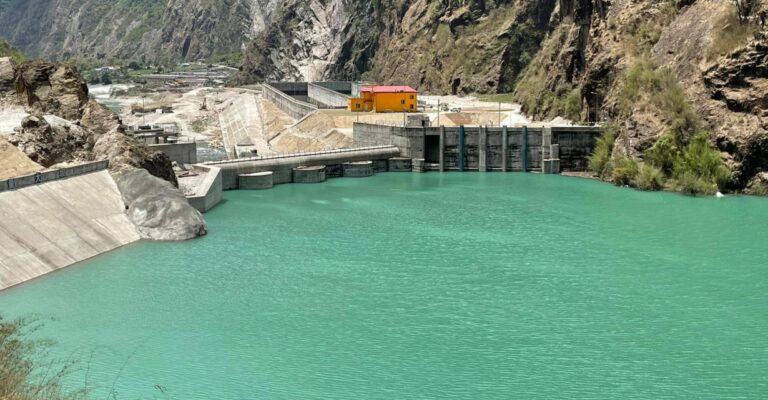
The Upper Tamakoshi Hydropower Project, a much-awaited national pride project, is scheduled to start commercial production from Thursday.
Chief Executive Officer (CEO) of the Upper Tamakoshi Hydropower Project Bigyan Prasad Shrestha said that commercial production from all six units of the project would begin as soon as the main test of all the units was completed. The test of sixth unit of the project completed successfully on Sunday.
The project will start generating power at full capacity of 456 MW for commercial purposes. The project had been under construction in Bigu Rural Municipality-1, Lama Bagar of Dolakha district for the past 10 years.
Six units of 76 MW each have been connected to the 456 MW project constructed with domestic investment. Earlier, the first unit of the project had started generating 76 MW of electricity commercially from 5 July 2021.
Erstwhile prime minister KP Sharma Oli had inaugurated Nepal’s first largest hydropower project under domestic investment virtually from Kathmandu on July 5.
The electricity generated by the project is connected to the newly constructed 220/132 KV New Khimti substation at Phulasi in Manthali Municipality-13 of Ramechhap through a 47 km long 220 KV double circuit transmission line.
The New Khimti Substation is connected to the Nepal Electricity Authority’s 400 KV substation at Dhalkebar.
This project of 822 metres head and daily picking run of the river will be able to operate at full capacity for four-and-a-half hours even in the dry season. The project will generate 2.28 billion units of electricity annually, Shrestha said.
The completion date of the project’s construction, which started in 2010 with the target of completion in five years, had been initially pushed back by six years.
Though the project was supposed to be completed by 2015, construction works were disrupted for two and a half years due to landslides at the project site induced by the 2015 massive earthquake and the economic blockade imposed by India in the aftermath of the quake.
Meanwhile, sluggish pace and poor performance of Railway and Engineering Limited, an Indian company contracted to install hydromechanical equipment at the project, resulted in an inflated construction cost.
Constant extension of completion deadline has increased the construction cost to Rs 84 billion from the estimated Rs 48 billion including interest for the construction period.
With the addition of power generated from the project to the national grid, the amount of electricity imported from India during winter months is said to decline significantly.
Nepal Electricity Authority has estimated that Nepal can now sell about 500 MW of electricity generated from various hydel projects to India during the four months of monsoon season.
Despite adequate power production, lack of physical infrastructure such as transmission lines has promoted electricity waste in Nepal.
According to Nepal Electricity Authority, a total of 400 MW of electricity is going to waste during night while the loss during day time stands at around 200 MW to 300 MW on a daily basis. The power utility is incurring a financial loss of Rs 40 million every day because of power wastage.
Currently, 108 private hydropower projects have been supplying 815-MW of electricity to the national grid. In total, the country now consumes 1,542 MW of electricity.






